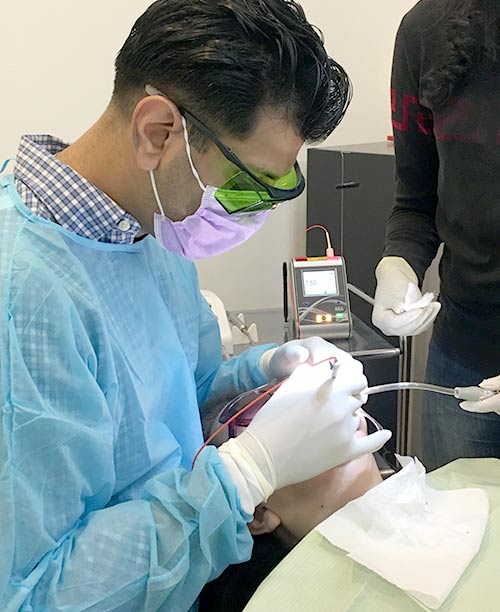Your Knight With Shiny Armour That Saves The Day!

A dull throb on your gums? A strike of sensitivity when you bite? A pulsating pain radiating around your jaw, head and sometimes to your shoulder and neck? At that very moment, you know you have a toothache.
“The pain is spontaneous, appears without any stimulus, disturbs your sleep at night, throbs and radiates to other parts of your head and jaw…”
A toothache could mean many things, anything from a mild sensitivity to a shooting pain radiating to your head, disturbing your sleep! The cause … Nerve Pain!
Our tooth is made out of few layers, the centre piece being the nerve bundle (the pulp). If a tooth experiences a sensation such as pain or sensitivity, it could mean a trauma, gum recession or infection, periodontal problem, a crack or a cavity.
A thorough examination is required to isolate the problem using a couple of diagnostic tools such as clinical examination, X-ray and pulp vitality test. Once the diagnosis is established, the necessary treatment can be carried out. A rule of thumb suggests throbbing and radiating toothache which spontaneously arises to be irreversible pulpits. In such cases, a root canal therapy is indicated.
A root canal treatment is a technical approach to remove the nerves of the tooth (if any), together with any dead tissue debris while cleaning and shaping the root canal using special instruments and materials. The objective of this treatment is to ensure total removal of vital and non vital tissues from the root canal, while disinfecting it from any existing microbes. It gives the tooth a fighting chance to survive despite being dead, so in other words you Do Not Need to Remove The Tooth.
Root canal therapy can be a huge relief for severe tooth ache caused by nerve pain, most often by bacteria or severe gum disease. It is a technic sensitive procedure done under proper isolation of the tooth to ensure a good success rate. After performing a root canal treatment, it’s crucial to restore the tooth with a good filling material. For a more comprehensive approach, a crown is usually suggested if the defect was big. For severely damaged tooth, a crown is advocated after performing a post and core treatment on the affected tooth.


A root canal therapy on an anterior (front) tooth can be easy since it only has 1 canal. However, the treatment can get complicated as we approach the molars. This is due to the number and the location of the canals, which differs from one person to another. Some canals are easily located and cleaned, while certain canals appear blocked and unaccessible. This is due to calcification of the canal, which takes place over time and makes the root canal treatment difficult.
The outcome of a root canal treatment is usually encouraging, but due to its limitations the treatment sometimes may not be favourable in certain circumstances. For example, a long standing abcess or periodontally compromised tooth may have a lower success rate. It gets even more challenging with the presence of accessory canals. These accessory canals lie deep in the heart of the root canal system, sometimes even at the furcation of the tooth. These canals are hard to clean and are potential sites for bacterial infestation. Many of these finer canals are hidden, and this is a very common finding among the main canals where they branch out to minor accessory canals.
A root canal therapy gives you tooth a fighting chance, and certainly is a better option than extraction

Many times we find ourselves debating whether the tooth is worth saving, or whether saving the tooth would eventually end up in getting a root canal done.
A root canal therapy gives you tooth a fighting chance, and certainly is a better option than extraction. At times, the extent of the infection or decay could affect the outcome of the treatment and therefor the tooth might require a more comprehensive approach. This is when with proper and detailed explanation, it can be justified if a tooth needs a root canal treatment rather than a large filling.
The dilemma of saving a tooth versus doing a root canal, is a battle we dentists face on a daily basis. The bottom line is basically saving your tooth, no matter which options are available. A root canal treatment is aimed at removal of the defected nerve, while treating the pain of the tooth if no other options are available.
If your tooth needs a saviour, you can count on us to be your Knight in Shiny Armour!
